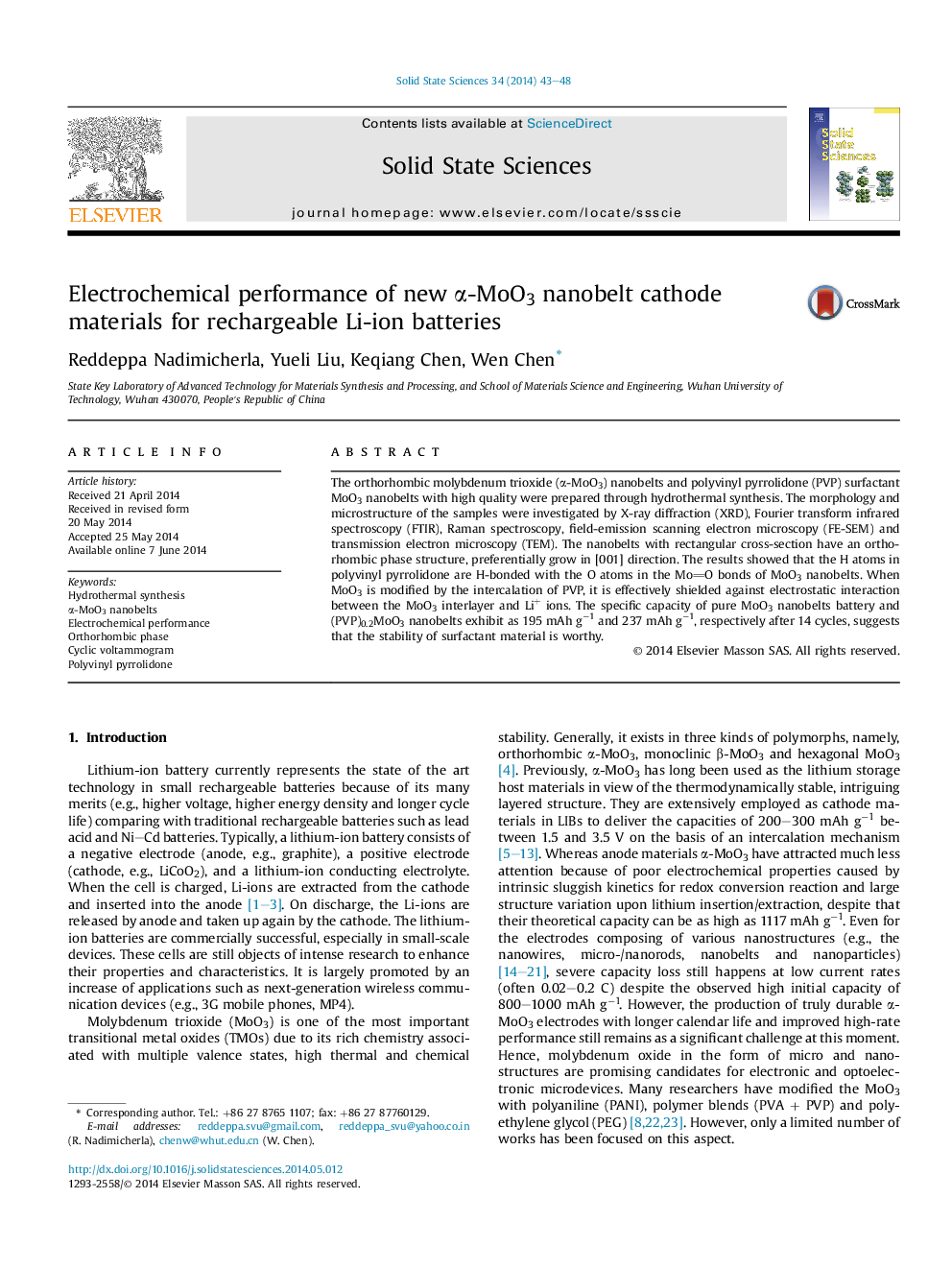| Article ID | Journal | Published Year | Pages | File Type |
|---|---|---|---|---|
| 1504306 | Solid State Sciences | 2014 | 6 Pages |
•α-MoO3 and PVP surfactant MoO3 nanobelts were synthesized by hydrothermal method.•The length and width of the nanobelts is about 1–5 μm and 50–150 nm respectively.•The capacity retention of 0.2 mol% PVP surfactant MoO3 nanobelts is 56.3%.•The specific capacity of 0.2 mol% PVP surfactant MoO3 nanobelts is 300 mAh g−1.•After 14 cycles the capacity of 0.2 mol% PVP surfactant MoO3 nanobelt is 237 mAh g−1.
The orthorhombic molybdenum trioxide (α-MoO3) nanobelts and polyvinyl pyrrolidone (PVP) surfactant MoO3 nanobelts with high quality were prepared through hydrothermal synthesis. The morphology and microstructure of the samples were investigated by X-ray diffraction (XRD), Fourier transform infrared spectroscopy (FTIR), Raman spectroscopy, field-emission scanning electron microscopy (FE-SEM) and transmission electron microscopy (TEM). The nanobelts with rectangular cross-section have an orthorhombic phase structure, preferentially grow in [001] direction. The results showed that the H atoms in polyvinyl pyrrolidone are H-bonded with the O atoms in the MoO bonds of MoO3 nanobelts. When MoO3 is modified by the intercalation of PVP, it is effectively shielded against electrostatic interaction between the MoO3 interlayer and Li+ ions. The specific capacity of pure MoO3 nanobelts battery and (PVP)0.2MoO3 nanobelts exhibit as 195 mAh g−1 and 237 mAh g−1, respectively after 14 cycles, suggests that the stability of surfactant material is worthy.
Graphical abstractFigure optionsDownload full-size imageDownload as PowerPoint slide
